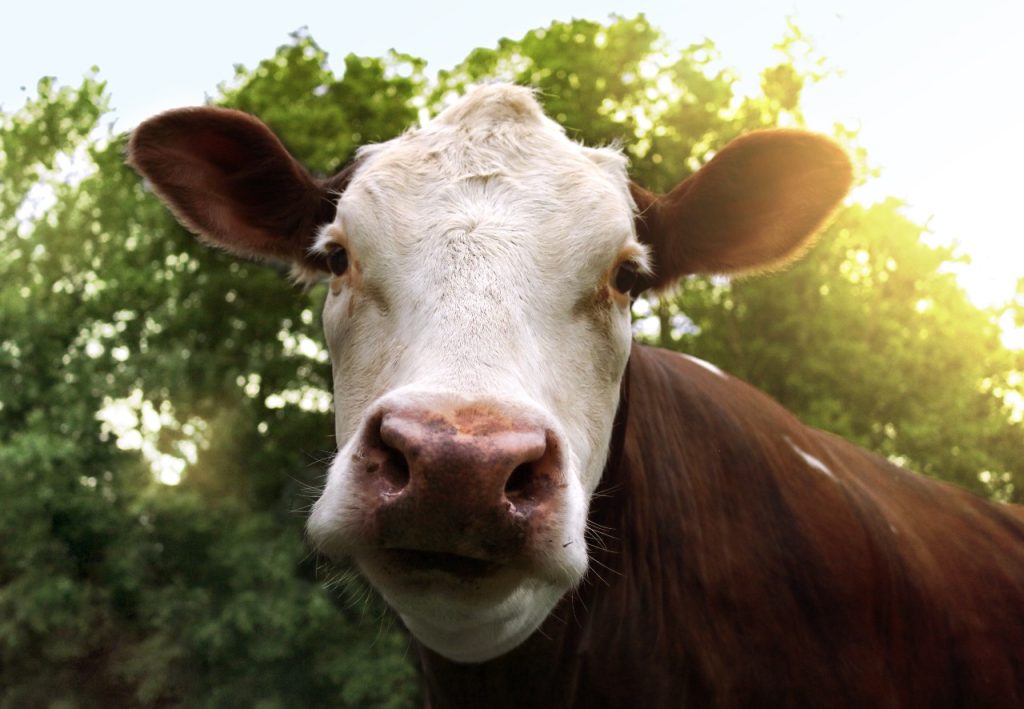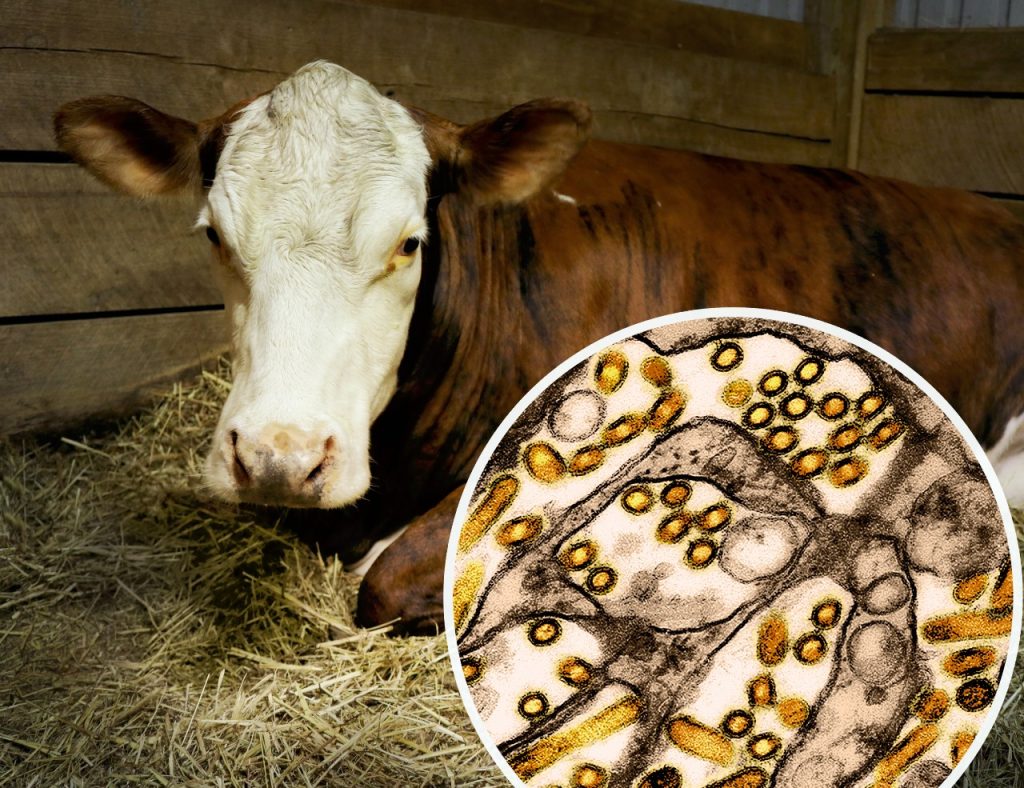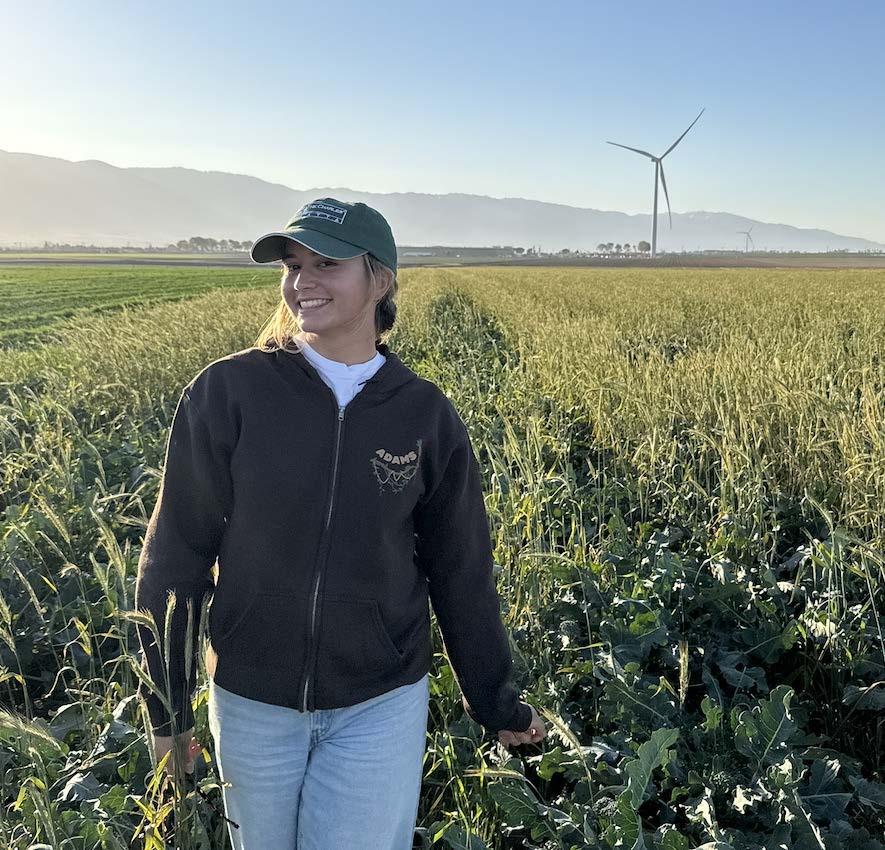
Empty shelves, sky-high prices, and purchasing limits on eggs: the public definitely felt the recent bird flu outbreak’s impact on poultry products. But the dairy industry also felt the strain, especially in California, which produces a fifth of all U.S. dairy products. The impacts of bird flu on the dairy industry are less obvious, perhaps, but they continue and with sweltering summer temperatures on the horizon, researchers warn that dairy impacts could get worse rather than better. Even more worrisome, the longer the virus circulates the more mutations arise. Immunologists are on the lookout now for mutations that could make the H5N1 bird flu able to spread not just from animals to humans, but directly from person to person.
The current bird flu variant, called H5N1, was first detected in 1996, in China. Over the following decades, the virus slowly disseminated across the globe through wild birds. In 2021, this strain of bird flu officially reached North America, where the virus has spread to new species, most notably, domestic poultry. The latest outbreak, starting in 2022, quickly decimated poultry populations. Over 166 million birds have died, either from the virus directly or by being culled to prevent further spread.
Then, on March 25, 2024, one positive detection, in Texas, rattled the world. For the first time, H5N1 was found in a dairy cow. Experts say the virus jumped from birds to cattle in what’s known as a “spillover event,” a risk that increases when different species are in close contact, as farm animals often can be.
Responding to these conditions, the USDA put limits on the movement of dairy cattle, issuing a federal order requiring lactating dairy cattle to test negative for H5N1 before crossing state lines, and mandating reporting of positive cases in April 2024. Despite control efforts, the virus proved uncontainable. On August 30, 2024, California’s battle with H5N1 in dairy cattle officially began.
California’s Response
When news broke of the H5N1’s first-ever case in dairy cattle, California’s State Veterinarian, Dr. Annette Jones, sprang into action, gathering information, collaborating with the state’s dairy industry and crafting a cross-agency response plan. “We did have a game plan,” Jones said in an interview. “Granted, it was based on not a lot of well-established facts.” The measures taken largely copied successful strategies at poultry operations, given H5N1’s lack of precedent in dairy cattle. Still, Jones said, the top priority was clear: “The most important thing is controlling the movement of infected cows [on and] off a dairy.”
California instituted the nation’s most extensive monitoring and testing system. The state also implemented an animal exhibition ban, set mandatory 60-day minimum quarantines of infected dairies, limited dairy cattle movement, and recalled raw milk products—which, unpasteurized, could become a transmission route to consumers. The California Department of Public Health (CDPH) publicized protection guidance and personal protective equipment (PPE) articles to local health departments and farms and in December 2024, Governor Gavin Newsom declared a state of emergency to unlock additional flexibility on rules to enable California’s evolving response.
Despite the state’s efforts, 71% of all California dairy herds have reported at least one case of bird flu. State Veterinarian Dr. Jones suggests California was hit especially hard because most of its dairies are concentrated close together, in the Central Valley, making containment more difficult.
Once a dairy cow contracts H5N1, the animal’s milk production capacity may temporarily drop by 20 to 30%, with recovery taking months. Since California’s dairy cases peaked in December 2024, the majority of herds have recovered. However, cases continue to emerge, and re-infection risks remain.
To address those risks, experts recommend logistics upgrades alongside other prevention strategies. Examples include designated break areas for workers away from the herd, and PPE storage lockers so workers don’t bring gear home. Texas A&M assistant professor and dairy extension specialist Jennifer Spencer emphasized the importance of washing vehicles before entering a dairy, because many visitors frequent multiple dairies and can spread the virus as they go. John Taylor, the owner of Bivalve Dairy, a small-scale dairy farm in Marin County, models a different route: boot washing stations outside of every barn. Upon entering each barn, everyone must pass through this sanitizing station.

These measures are not just about stopping the spread among cattle—it’s also about protecting people. Frontline dairy workers face numerous transmission risks, including raw milk splashing in their eyes, touching their face after hand contact with the live virus, and ingesting or inhaling contaminated droplets in the air. The greatest need isn’t just for personal protective equipment, according to the Centers for Disease Prevention, but for better communication to dairy workers about how and why to use that PPE. Without fully understanding their infection risk, dairy workers may prioritize the equipment’s discomfort over its protection.
At Bivalve Dairy, Taylor notes that even with strong systems in place, constant reinforcement is essential. Take protective eyewear, for instance. “Glasses are the first things [dairy workers] don’t follow,” Taylor said. “They’re uncomfortable.”
While Taylor prioritizes clear and consistent communication of biosecurity measures at his dairy, that diligence isn’t shared by all California operations. A UC Merced study of 30 dairy workers across eight Central Valley cities found that only one had received a clear, human-focused H5N1 briefing. So it’s no surprise that proper PPE use slips through the cracks: many workers simply haven’t been told why it matters. “I think we just need to keep on the messaging,” said Jones, calling for public health officials to “repeat, repeat, repeat.”
Officials at the California Division of Occupational Safety and Health (Cal/OSHA) believe their currently under-utilized tipline—which allows anonymous, multilingual reporting—could be a solution. Cal/OSHA must act if the report cites clear examples of unsafe working conditions and mentions Section 5199.1, the standard that regulates animal-based disease transmission within California’s code of regulations.
The next step is ensuring workers know this tipline exists. California’s Department of Industrial Relations and several counties have posted flyers online to inform dairy workers of their rights and how to report to Cal/OSHA. However, there’s no data on whether the materials were distributed on the ground or had any measurable impact.
With high summer temperatures impending, conditions on dairy farms will only worsen for workers. Sporting full PPE is difficult enough even in cool weather. In the summer heat, PPE will be significantly more uncomfortable and. In extreme cases, dangerous due to overheating. California will need to get creative with lighter PPE or alternative solutions. After all, if H5N1 spreads further among vulnerable dairy workers, the risk of human-to-human transmission grows. Protecting workers is important in itself, of course. But protecting them protects us all as well.

